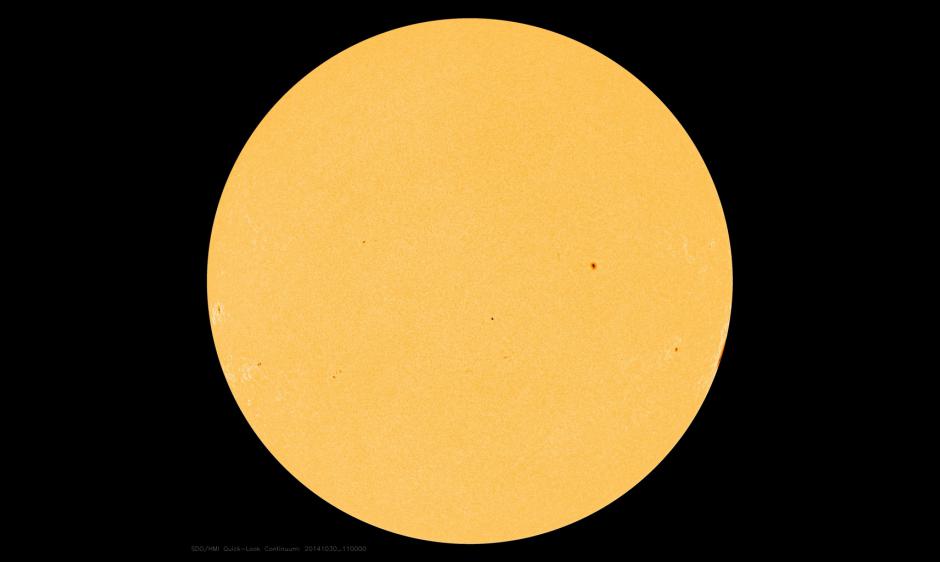
12192 Departing - Solar Activity in Decline
Active Region 12192, the largest region since November 18, 1990, is essentially now out of view. The full tally of solar flare activity to date, compared to that region in 1990, is updated in the table below. Remarkably, Region 12192 did not produce any radiation storms or significant Earth-directed coronal mass ejections (CMEs) during its transit across the visible disk. With this region now on the limb or slightly behind, the threat of Earth-directed CMEs is essentially gone. However, continued flaring is still possible as the loops high above this region will be visible for several days. In addition, a radiation storm is still possible should another significant eruption occur. Beyond that, only small spots pepper the disk at this time, in stark contrast to just a week ago.
| Region 6368 (1990) | Region 12192 (2014)* | |
|---|---|---|
| R3-R5 (X-class) flares | 0 | 6 |
| R1-R2 (M-class) flares | 14 | 35 |
*Through mid-day October 30.